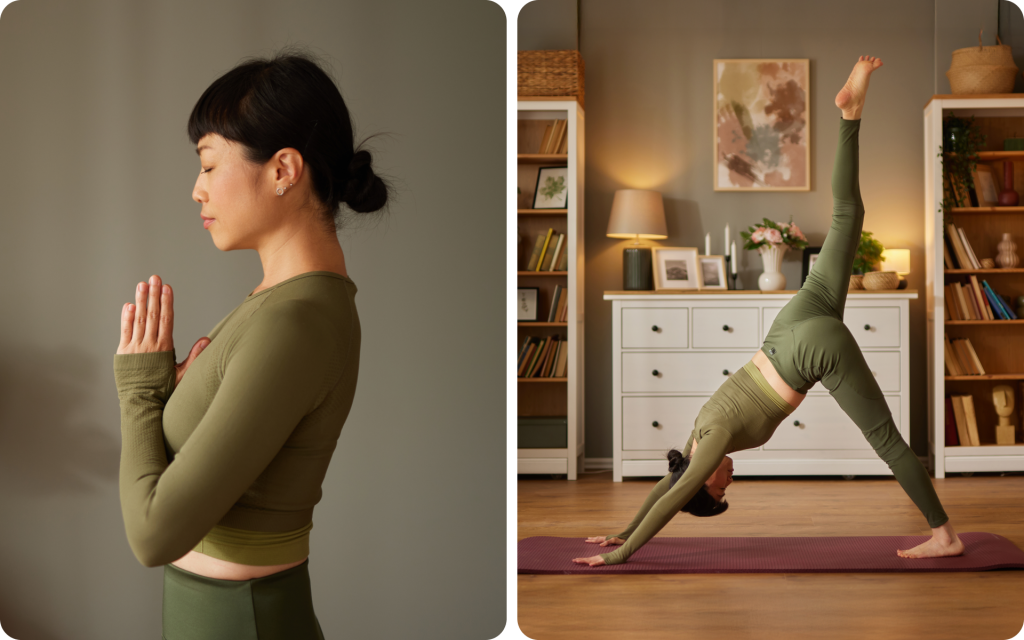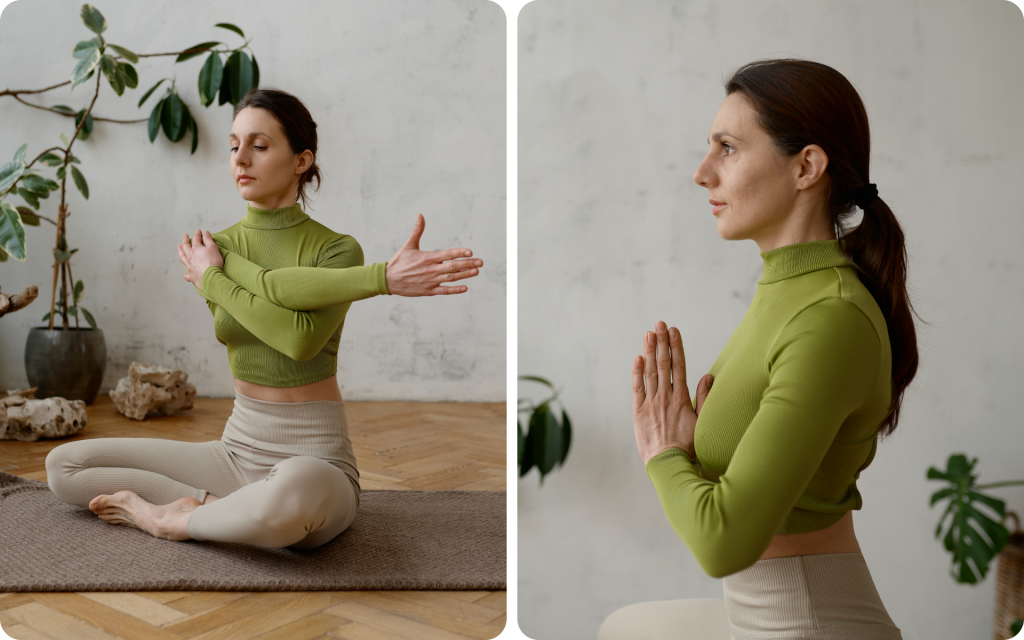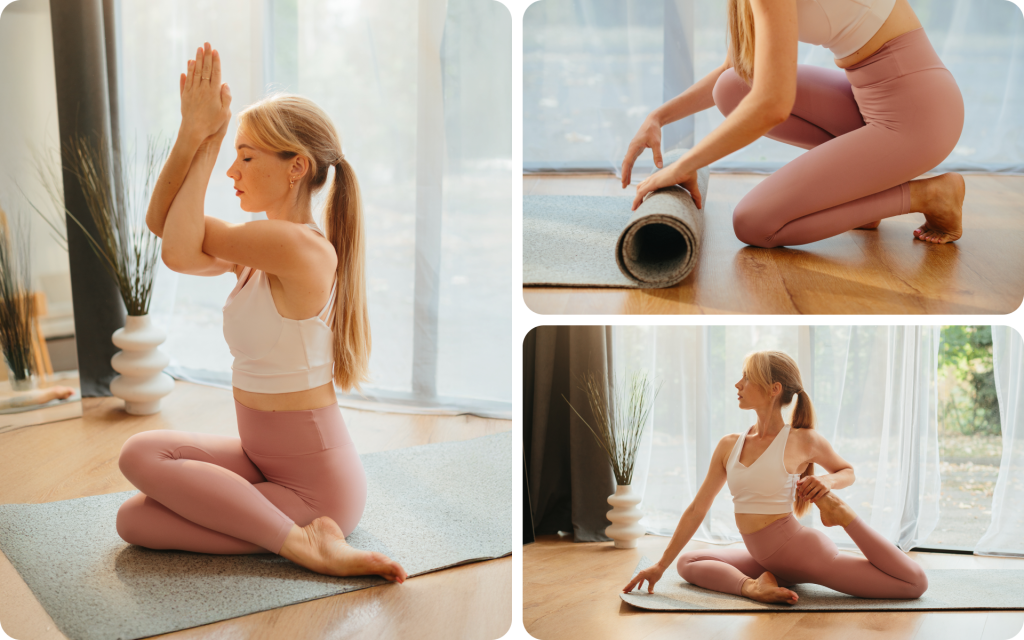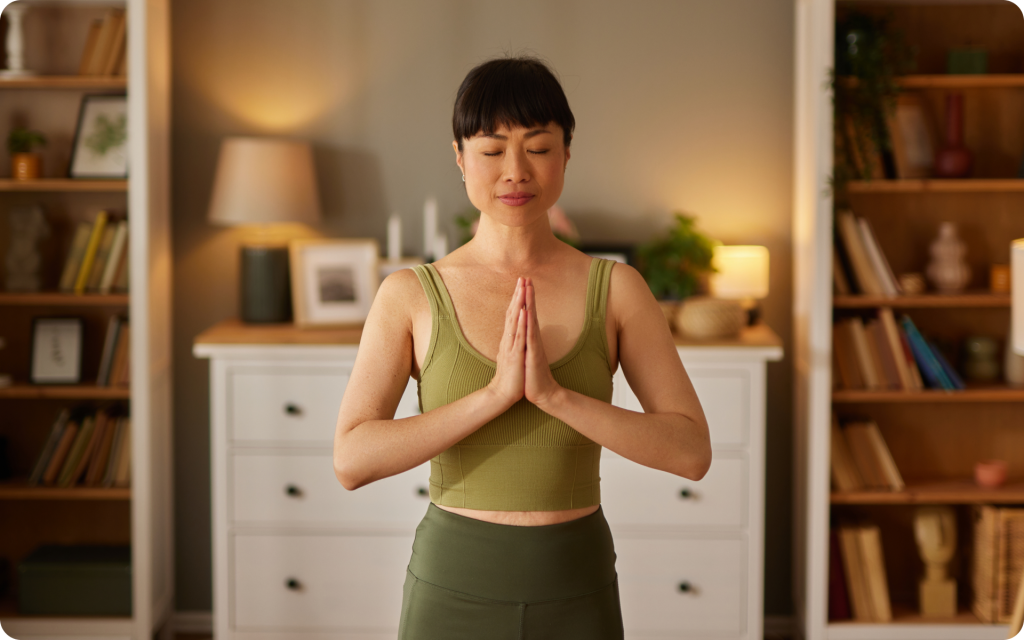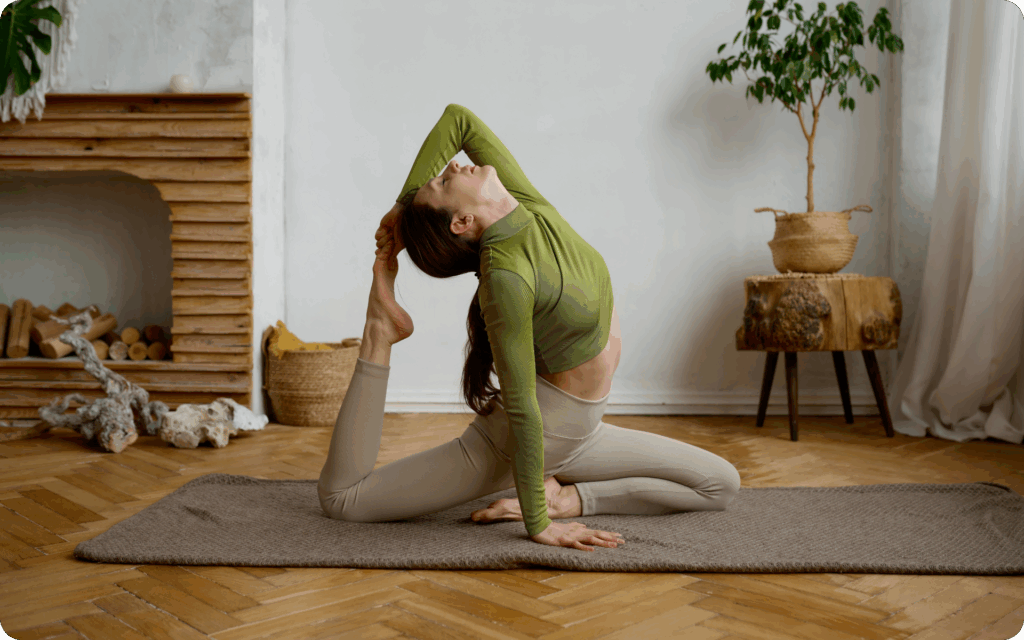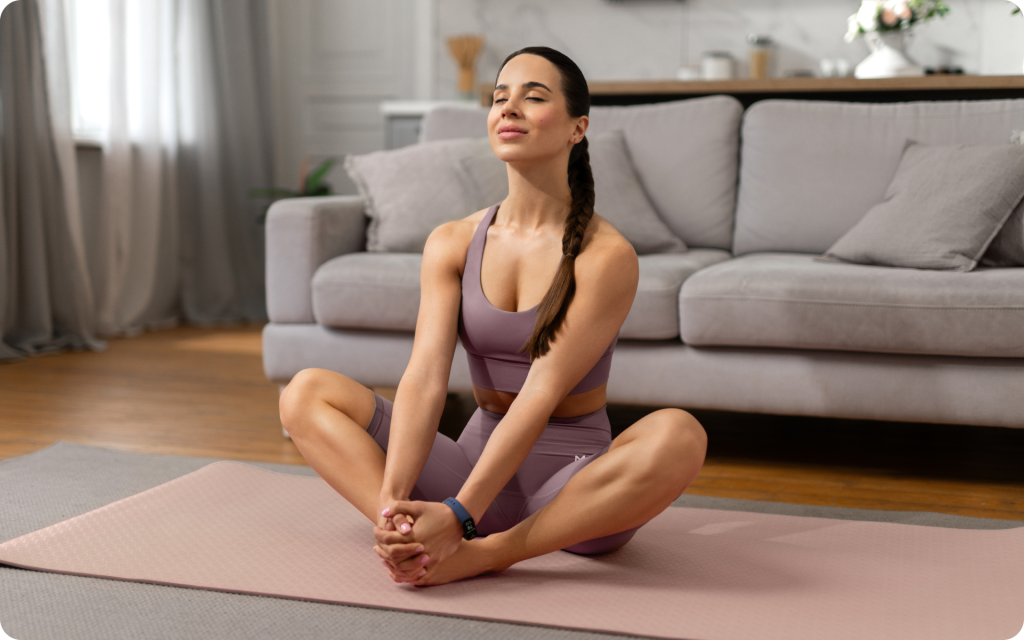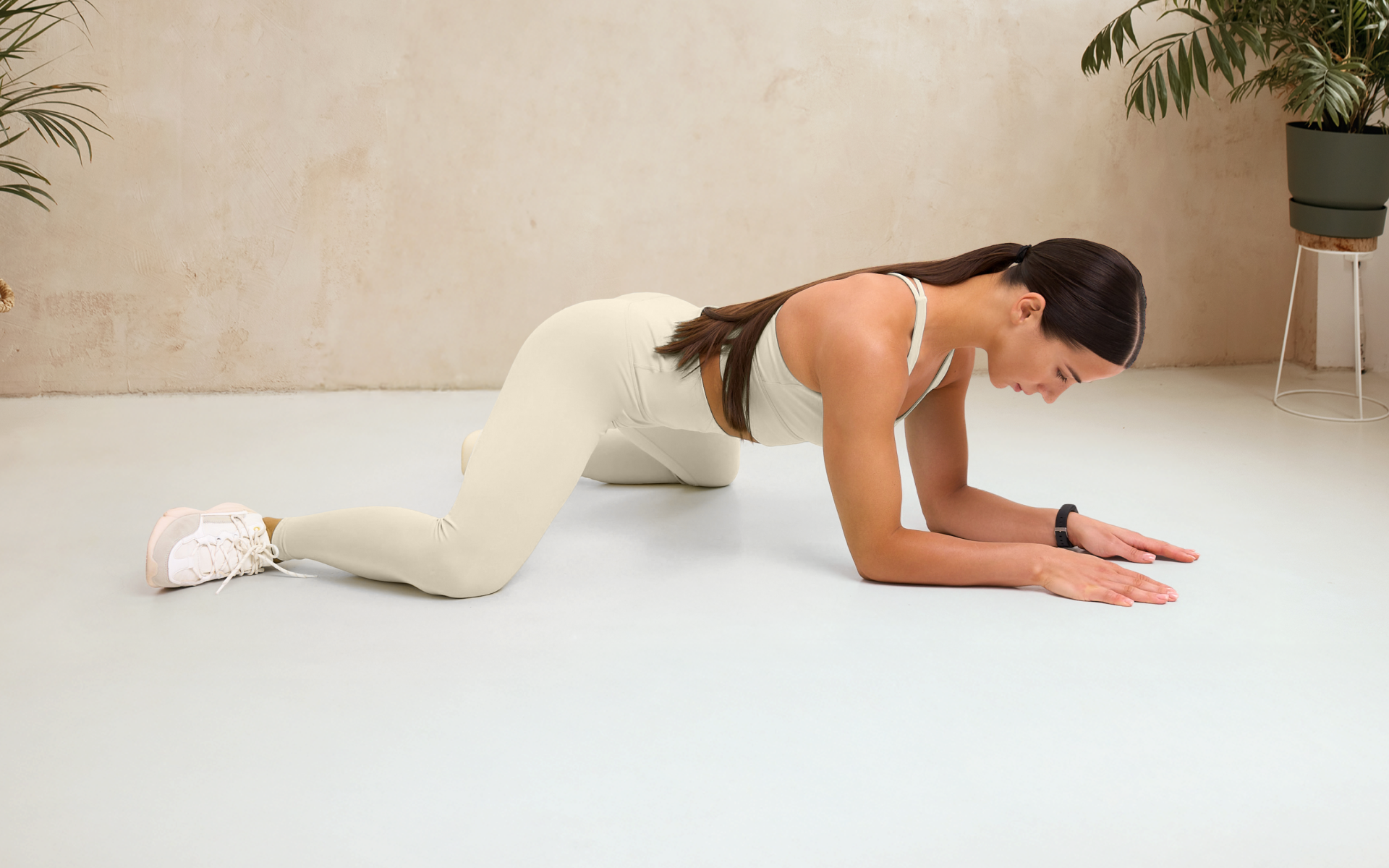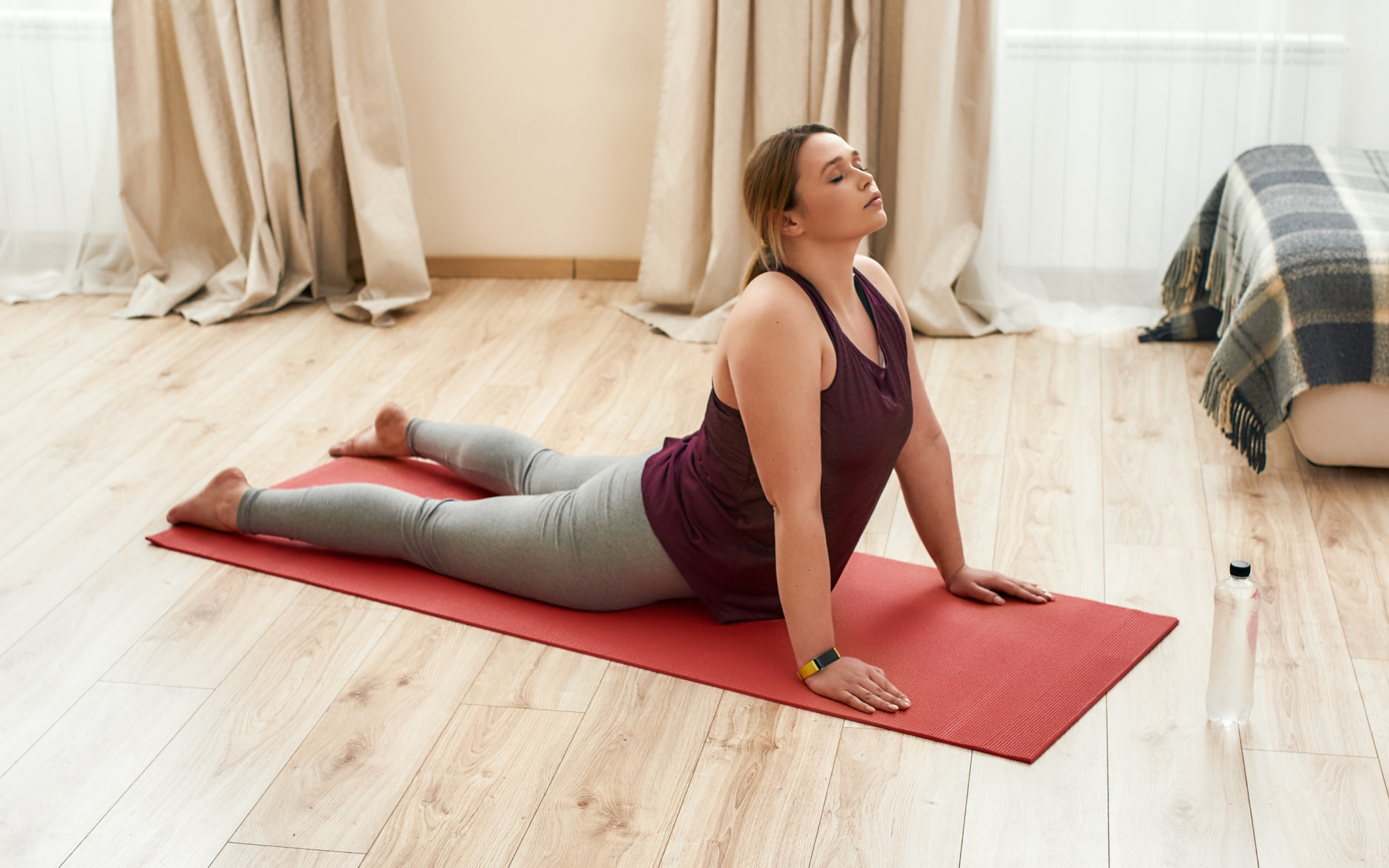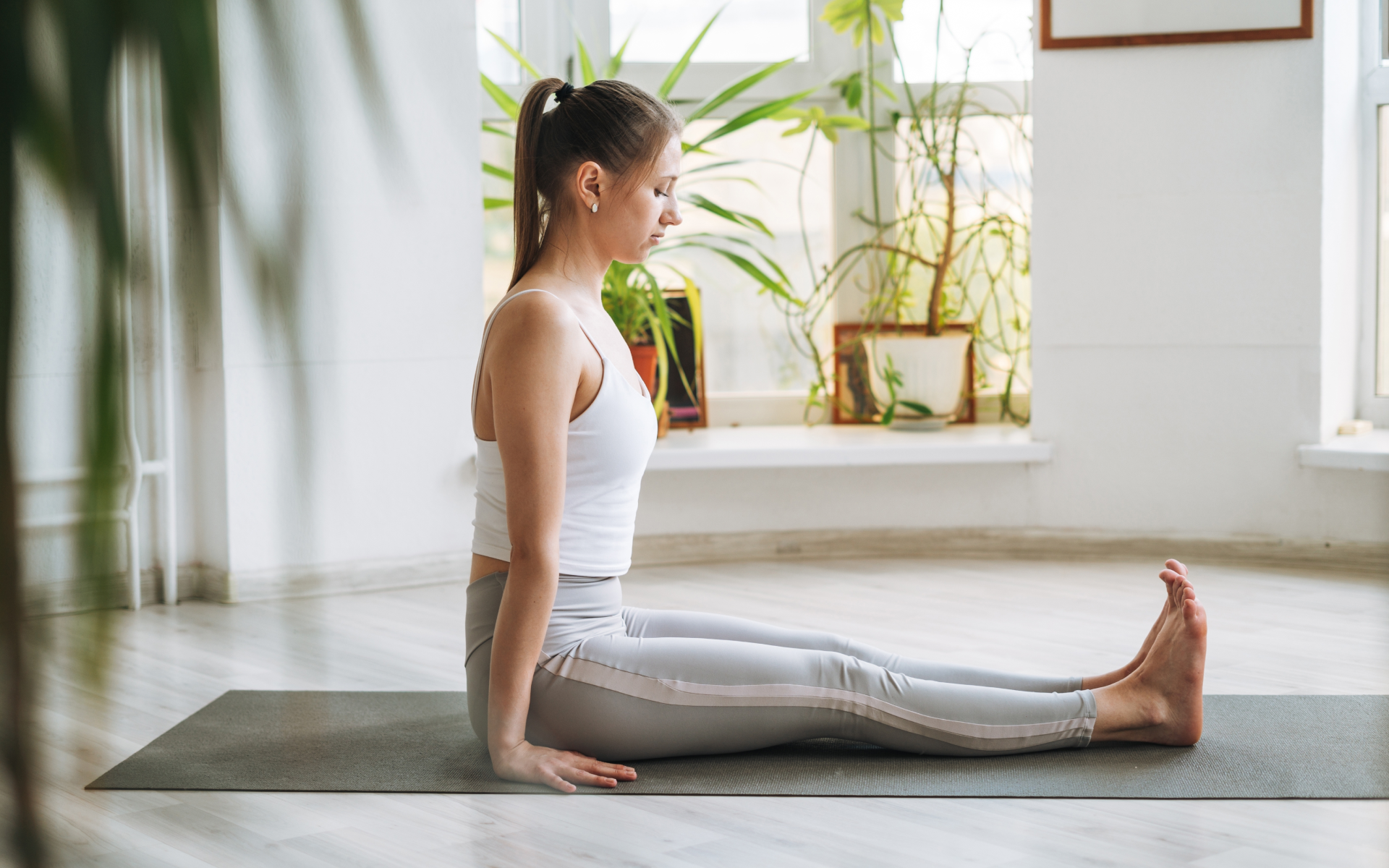Stress is tricky and often appears when you don’t expect it. Sure, it may be positive: you feel stressed before going on your first date with a stud, before your birthday party, or at a wedding ceremony.
However, sometimes you feel flustered, which may cause unpleasant body sensations. Do you remember the last time you stressed over something that left you with an upset stomach or headache?
It could be anything: slight jealousy toward your partner, dismay from failing your driving test, or chatting with a repugnant salesperson.
You may have heard of Pilates, yoga, gratitude, or meditation as stress-relief techniques. They can have an impact and help you relax, alleviate stress, and lift your spirits afterwards.
Here you’ll learn about a different strategy to calm your body, improve self-awareness, and cultivate the mind-body connection. You’re about to dive into the world of somatic relaxation techniques to target and regulate your nervous system. This article will answer some specific questions that may pop into your mind:
- What are restorative somatic relaxation techniques?
- What is the difference between cognitive and somatic relaxation?
- How do you calm your somatic system?
How to Calm Your Somatic System
According to the Cleveland Clinic, the somatic nervous system allows you to move and control your muscles throughout your body (1).
The somatic system also governs how the body responds to stress and tension. As you face stressful situations, your body can respond with tight muscles.
For example, imagine this scenario: another driver bumps into your car, causing damage. Your heart races, your body feels shock and anger, and your muscles tense. You want to jostle that driver to the ground, but you realize that you need to calm yourself down.
Calming your somatic system quickly on the spot can be done via a powerful breathwork technique.
Breathing is effective for alleviating anxiety, boosting your mood, and reducing respiratory rates (2).
For example, you could try a short box breathing technique:
- Breathe in through your nose, counting to four.
- Hold your breath for another count of four.
- Slowly release them through your mouth for a four count.
- Hold the release for a four count, then repeat (3).
This is a good way to cool down your somatic system. If you’re already familiar with box breathing, continue reading for other somatic relaxation techniques for mental health.
Read more: Somatic Wall Pilates: A New Era Of Mind-Body Movement
How Do You Release Somatic Tension?
Somatic tension refers to physical signs of stress, such as tight muscles and poor sleep. Releasing somatic tension is possible on your own in the comfort of your home. All you need is somatic relaxation techniques for adults – they foster a connection between your mind and body, allowing you to feel safe in your body, while exploring emotions and thoughts that may surface (4).
Consistency matters if you’re hoping to get the full benefits from somatic techniques. Somatic emotional release is a gradual process, so allow yourself the space and patience you need as the release comes (5).
Most importantly, you need to consult a mental health professional if you’re currently struggling with depression, trauma, or any other mental health condition. Somatic therapy might be used as a complementary strategy. If you’re looking for practical ways to relax, take a look at the techniques below (6).
Whether you’re a workout beast or just a beginner making your first foray into the world of fitness and dieting – BetterMe has a lot to offer to both newbies and experts! Install the app and experience the versatility first-hand!
What Are Some Effective Somatic Relaxation Techniques?
Somatic relaxation techniques for anxiety and other forms of distress may work differently for each individual. Despite their simplicity, these strategies can have a real impact. If not at the beginning, in time, you’ll see desirable changes.
Remember to start small. Pick one or two approaches and practice with full attention and concentration, focusing on how your body feels.
These methods are not the primary treatment for any mental health condition. Let’s now take a look at basic somatic relaxation techniques examples (3):
Technique #1 Grounding: Focus on the Present
Have you ever been so overwhelmed with stressful thoughts that you can’t fully notice what is happening around you?
You walk in the park, not noticing the beauty around you because you’re too busy thinking about everything that is going wrong in your life. These thoughts prevent you from relaxing and enjoying the moment.
Or you’re at the checkout in the grocery store, not hearing the final price because your mind is elsewhere.
This is where the grounding technique can be useful. It shifts your focus away from the nagging thoughts and feelings and anchors you in the present:
- Use the 5-4-3-2-1 Method:
- Notice 5 things around you that you can visually observe.
- Bring awareness to 4 things you can touch and physically feel – pay attention to their texture or temperature.
- Tune into 3 sounds near or far.
- Identify 2 scents present in your environment.
- Acknowledge 1 taste or sensation in your mouth.
- Barefoot grounding: if possible, walk barefoot on grass, soil, or sand, focusing on the sensations beneath you.
- Temperature changes: Run cold water, then warm water over your hands, and notice how you feel about this (3)
Technique #2 Breathing Strategies
You’ve already got acquainted with box breathing. It’s not the only way to relieve your anxiety.
Try 4-7-8 Breathing. Here’s how you do it:
- Inhale through your nose for a 4 count.
- Hold your breath for a 7 count.
- Exhale through your mouth for an 8 count, making a gentle sound.
Your breath is the basic tool for calming your nervous system. Slowing down your breath helps your body soothe, signaling that it’s safe to relax.
One study has shown that diaphragmatic breathing supports the body’s natural relaxation response by lowering cortisol levels, which reduces stress (7).
It’s fine not to reach the full count for each breath. The mentioned counts are general guidelines to regulate your breathing and chill your nervous system.
Technique #3 Progressive Muscle Relaxation (PMR)
This technique involves tensing and releasing each muscle group, which can help you notice physical tension and encourage relaxation (3).
Here’s how you can practice progressive muscle relaxation. As you practice this technique, notice how your muscles hold tension.
- Find a relaxed position – either sitting or lying comfortably.
- Tighten your face muscles: scrunch your eyes, mouth, and forehead. Hold for 5 seconds and slowly release.
- Draw your shoulders towards your ears. Clench your fists and tense your arms. Hold for 5 seconds, and relax.
- Take a deep breath, tightening your chest and core. Hold for 5 seconds, exhale, and let go.
- Press your legs together, flex your toes, tense your thighs and calves. Hold for 5 seconds and release.
- Tense your entire body from head to toe. Hold for 5 seconds, release fully as you breathe out, softening each muscle.
Reasons why BetterMe is a safe bet: a wide range of calorie-blasting workouts, finger-licking recipes, 24/7 support, challenges that’ll keep you on your best game, and that just scratches the surface! Start using our app and watch the magic happen.
Technique #4 Rhythmic Movement
Rhythmic movements are easy but truly effective in helping your body release tension. They are probably the most enjoyable somatic exercises for anxiety as they require no special dancing skills or structured moves (3).
They’re unstructured and intuitive, and can jazz up your routine with fun movements. Some samples of rhythmic movement include:
- Sway your body gently side to side while seated or standing.
- Gently shake your arms, legs, or even your entire body for 30 seconds, letting go of any tension.
- Put on your favorite song and dance like no one is watching: slow, fast, energetically, relaxed – whatever feels right for you.
- Roll your shoulders and neck backward and forward to ease stiffness.
Technique #5 Butterfly Hug Technique
Experiencing emotional distress can make you anxious. During such moments, you want to feel safe and sound and to be supported, both physically and emotionally.
When there’s no one around to hug, you can give yourself a gentle butterfly hug. To do so, you need to (3):
- Sit comfortably and fold your arms across your chest. Place your right hand on your left upper arm and your left hand on your right upper arm.
- Tap your arms gently, creating a rhythm.
- Acknowledge your sensations and feelings during tapping.
Technique #6 Body Scanning (3)
Body scanning is a powerful technique for developing mindfulness and strengthening your connection to your body. Here’s how to do it:
- Sit comfortably in a chair or lie on a couch and close your eyes.
- Pay attention to the lower part of your body, specifically your feet. Notice any sensations such as muscular tension or tingling that arise.
- Gradually shift your focus upward: scan your legs, core, chest, arms, shoulders, and head.
- Take deep calming breaths, and on the exhale, imagine letting go of all the tension and tightness you feel.
Read more: Somatic Yoga Routine: A Path to Better Mind-Body Balance
What Is the Difference Between Cognitive and Somatic Relaxation?
Somatic relaxation targets physical manifestations of stress, such as muscular tension or discomfort by increasing awareness of bodily sensations. It fosters mind-body connection via movement-based practices (8).
You’ve encountered the best somatic techniques for releasing tension, such as deep breathing, grounding, progressive muscle relaxation, and others. By engaging the mind and body, somatic relaxation can improve emotional and physical health (8).
By contrast, cognitive relaxation focuses primarily on the mind and thoughts. Using mental strategies may help reduce stress, manage emotions, and control behaviors, often within cognitive behavioral therapy (9). One of its techniques is guided imagery relaxation (10). Our previous post goes into great detail about the 12 guided somatic experiencing exercises.
Imagery Relaxation (sample):
Spacing out is good, particularly in moments of distress. Going to a serene place in your imagination when you’re anxious isn’t about escaping reality (10):
It’s about creating a soothing environment in your imagination to release stress and help yourself unwind.
Visualization is a perfect practice that can be done anywhere (not while driving, though).
- Shut your eyes, imagine a serene place where you feel safe. This could be a forest, beach, cozy room, a park – anything that chills you out.
- Picture the details vividly. Notice the sounds, colors, smells, and sensations in this place. Imagine the sound of thunder and a downpour.
- Stay in your imagined place as long as you want. Let the calmness of your surroundings help your body and mind relax.
To summarize, cognitive relaxation calms your body through your mind, while somatic relaxation calms your mind through your body. Mixing these approaches may be even more beneficial than just practicing one alone.
How Does a Somatic Relaxation Feel?
Somatic relaxation is felt mostly in your body. When you practice somatic exercises to release trauma or to reduce anxiety, the process starts with changes in bodily sensations: your tight muscles soften, breathing gets deeper, and tension gradually releases (11).
Your attention shifts from racing thoughts to bodily sensations, which creates a sense of grounded presence. You’ll notice that you can experience intense emotions without feeling overwhelmed. Mentally, it gives you clarity and calm, while you feel safe and connected to your body (11).
Somatic relaxation feels like a gentle unwinding of your body and mind: as if you’ve had a truly restful vacation, leaving you more centered and at ease.
Your experience may differ from this explanation, but the approximate effects may crop up, especially with consistent practice.
Yes, somatic exercises work. They boost body awareness, relieve stress, support trauma healing, enhance mindfulness, and build up a mind-body connection. There isn’t a great deal of high-quality research available at this time on somatic practices, but there is support for the benefits of mindfulness and exercise. Mindful breathing, gentle movements, and grounding promote relaxation and support your physical and mental well-being (12). Somatic exercises are a part of somatic therapy, which may be effective for releasing trauma (13) by easing stored tension and helping you reconnect with your body. Moreover, they allow emotions linked to past experiences to surface safely, which promotes healing. Somatic anxiety involves the body’s physical responses to stress, including elevated heart rate, increased cortisol levels, and muscle tension (14). Somatic release feels like tension easing from your body. You may notice muscles loosening, gentle tingling, or a sense of lightness. Emotions that are tied to past experiences can emerge, leaving you calmer and more grounded (11).Frequently Asked Questions
Do somatic exercises really work?
Do somatic exercises release trauma?
What is somatic anxiety?
What does somatic release feel like?
The Bottom Line
Somatic relaxation is a great way to relax your mind by targeting your body. Its best techniques are grounding, breathing, progressive muscle relaxation, body scanning, rhythmic movement, and the butterfly hug.
Somatic relaxation doesn’t require any special equipment or a specific place to unwind. Basically, you need a safe and peaceful spot to practice the techniques. By contrast, cognitive relaxation focuses on your mind and mental processes to calm your body down.
DISCLAIMER:
This article is intended for general informational purposes only and does not serve to address individual circumstances. It is not a substitute for professional advice or help and should not be relied on for making any kind of decision-making. Any action taken as a direct or indirect result of the information in this article is entirely at your own risk and is your sole responsibility.
BetterMe, its content staff, and its medical advisors accept no responsibility for inaccuracies, errors, misstatements, inconsistencies, or omissions and specifically disclaim any liability, loss or risk, personal, professional or otherwise, which may be incurred as a consequence, directly or indirectly, of the use and/or application of any content.
You should always seek the advice of your physician or other qualified health provider with any questions you may have regarding a medical condition or your specific situation. Never disregard professional medical advice or delay seeking it because of BetterMe content. If you suspect or think you may have a medical emergency, call your doctor.
SOURCES:
- Somatic Nervous System (2022, my.clevelandclinic.org)
- Brief structured respiration practices enhance mood and reduce physiological arousal (2023, pmc.ncbi.nlm.nih.gov)
- Somatic Exercises for Anxiety Simple Techniques to Soothe Your Mind and Body (n.d., faithbehavioralhealth.com)
- Somatic Techniques for Stress and Anxiety (2024, brooklynsomatictherapy.com)
- Somato Emotional Release: The Holistic Technique That Can Treat Both Your Body And Your Mind (2023, iahe.com)
- Somatic experiencing (n.d., directory.traumahealing.org)
- The Effect of Diaphragmatic Breathing on Attention, Negative Affect and Stress in Healthy Adults (2017, pmc.ncbi.nlm.nih.gov)
- Somatic experiencing – effectiveness and key factors of a body-oriented trauma therapy: a scoping literature review (2021, pmc.ncbi.nlm.nih.gov)
- Cognitive-Behavioral Treatments for Anxiety and Stress-Related Disorders (2021, pmc.ncbi.nlm.nih.gov)
- Learning to Relax (n.d., rogelcancercenter.org)
- Somatic Exercises for Anxiety Simple Techniques to Soothe Your Mind and Body (n.d., faithbehavioralhealth.com)
- Somatic Exercises: What They Are and How They Benefit You (2025, health.clevelandclinic.org)
- Somatic Therapy: Signs Your Body Is Releasing Trauma (2024, integrishealth.org)
- Somatic Anxiety (n.d., sciencedirect.com)

